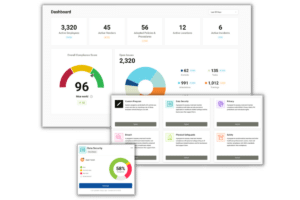
The third quarter of 2025 witnessed a devastating surge in healthcare data breaches, with 139 reported incidents compromising the protected health information (PHI) of 9,518,682 patients. This alarming figure represents not just statistics, but millions of individuals whose most sensitive medical and personal information has been exposed to potential misuse.
The data paints a clear picture: healthcare organizations remain prime targets for cybercriminals, and the consequences are growing more severe with each passing quarter.
Breach Breakdown by Organization Type
Healthcare Providers bore the brunt of breach incidents, accounting for 103 breaches (74.10%) that affected 8,618,470 patients (90.54%). From small physician practices to major hospital systems, providers across the spectrum found themselves victims of sophisticated attacks that exploited vulnerabilities in their digital infrastructure.
Business Associates experienced 30 breaches (21.58%) affecting 796,552 patients (8.37%). These third-party vendors—billing companies, cloud service providers, and medical transcription services—demonstrated that the healthcare data supply chain remains a critical weak point in the security ecosystem.
Health Plans reported 6 breaches (4.32%) impacting 103,660 patients (1.09%). While representing the smallest percentage, these incidents highlight that no sector of healthcare is immune to breach risk.
Attack Vector Analysis
The method behind these breaches reveals a troubling trend.
Hacking and IT Incidents dominated the threat landscape, responsible for 126 breaches (90.65%) and affecting a staggering 9,342,576 patients (98.15%). This overwhelming majority demonstrates that cybercriminals are using increasingly sophisticated technical methods—including ransomware, phishing campaigns, and exploitation of unpatched vulnerabilities—to infiltrate healthcare networks.
Unauthorized Access/Disclosure incidents accounted for 14 breaches (10.07%) affecting 176,106 patients (1.85%). These insider threats and improper disclosure events, while less common, remind us that security isn’t purely a technological challenge—it’s also about people and processes.
The Real Cost of Breaches
Beyond the numbers lies a human toll. Each compromised record represents a patient whose:
- Social Security number may be used for identity theft
- Medical history could be exploited for insurance fraud
- Financial information might be sold on the dark web
- Trust in the healthcare system has been fundamentally shaken
Healthcare organizations face average breach costs exceeding $10 million, including regulatory fines, legal fees, remediation expenses, and reputational damage that can take years to repair.
7 Essential Strategies to Prevent Healthcare Data Breaches
1. Implement Comprehensive HIPAA Compliance Policies
Strong, regularly updated policies form the foundation of breach prevention. Your organization needs documented procedures for:
- Access controls and user authentication
- Data encryption at rest and in transit
- Incident response protocols
- Workforce clearance procedures
- Business associate agreements
2. Conduct Regular Security Risk Assessments
With a rapidly evolving threat landscape, HIPAA requires continuous security risk assessments. A thorough assessment should:
- Identify where ePHI exists across all systems
- Evaluate current security measures
- Document potential vulnerabilities
- Prioritize remediation efforts
- Create actionable mitigation plans
Learn more about risk assessment in our comprehensive guide.
3. Deploy Multi-Layered Technical Safeguards
Protection requires defense in depth:
- Multi-factor authentication (MFA) for all system access
- Network segmentation to limit breach spread
- Regular patching and updates
- Advanced endpoint detection and response
- Encrypted communications and storage
4. Establish Mandatory Security Awareness Training
With 90% of breaches involving hacking, your workforce is both your greatest vulnerability and strongest defense. Effective training should:
- Be conducted at hire and annually thereafter
- Include real-world phishing simulations
- Cover password hygiene and social engineering tactics
- Address mobile device security
- Be documented for compliance purposes
5. Strengthen Business Associate Management
Given that 21.58% of breaches involved business associates, vendor risk management is critical:
- Conduct thorough due diligence before contracting
- Execute comprehensive Business Associate Agreements
- Require evidence of their security programs
- Perform periodic security reviews
- Maintain an updated inventory of all business associates
6. Implement Robust Access Controls
Not everyone needs access to everything:
- Apply the principle of least privilege
- Implement role-based access controls
- Conduct regular access reviews and audits
- Promptly remove access for terminated employees
- Monitor and log all access to ePHI
7. Develop and Test an Incident Response Plan
When (not if) an incident occurs, preparation is everything:
- Establish a response team with clear roles
- Create communication protocols
- Define containment and eradication procedures
- Plan for regulatory notification requirements
- Conduct tabletop exercises to test readiness
How Compliancy Group Protects Your Organization
Implementing comprehensive HIPAA compliance shouldn’t feel overwhelming. Compliancy Group’s software solution provides the complete framework healthcare organizations need to prevent breaches and maintain regulatory compliance:
Complete Policy and Procedure Management
Access a full library of customizable, attorney-drafted HIPAA policies and procedures that address every required element of compliance. Keep documentation current with automatic updates when regulations change, ensuring your organization never falls behind.
Guided Security Risk Assessment
Our proprietary risk assessment tool walks you through the entire process step-by-step, helping you identify vulnerabilities before attackers do. Generate comprehensive reports that satisfy HIPAA requirements and provide clear remediation roadmaps.
Integrated Training Platform
Deploy engaging, role-specific security awareness training to your entire workforce. Track completion automatically, deliver certificates, and ensure every team member understands their responsibility in protecting patient data.
Business Associate Management
Maintain a complete inventory of business associates, track BAA execution status, and document vendor security reviews—all in one centralized platform.
Continuous Compliance Monitoring
Receive alerts for required activities, track policy acknowledgments, and maintain the documentation necessary to demonstrate compliance during audits or investigations.
Expert Support When You Need It
Access experienced compliance professionals who understand healthcare operations and can provide guidance tailored to your organization’s specific needs.
Wrapping It All Up
The Q3 2025 data underscores an urgent reality: healthcare data breaches are not slowing down. With over 9.5 million patients affected in just three months and hacking incidents dominating the threat landscape, organizations cannot afford a reactive approach to security.
The path forward requires a commitment to comprehensive compliance—implementing robust policies, conducting thorough risk assessments, training your workforce, and leveraging technology designed specifically for healthcare’s unique regulatory environment.
The question isn’t whether your organization will be targeted. The question is whether you’ll be prepared.
Don’t wait until your organization becomes part of next quarter’s breach statistics. Take action today to protect your patients, your reputation, and your future.









